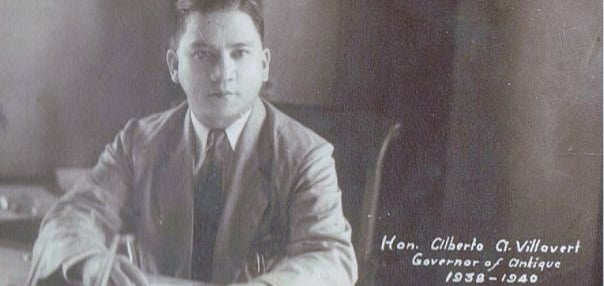The Rise and Early Reign: The Villavert Dynasty in Antique
THE EDITORIAL CHEESE
Patrick Petinglay Villavert
10/27/20254 min read


The Villavert dynasty is a notable example of the enduring presence of political dynasties in the Philippines, with its base of power established in the province of Antique in Western Visayas. Their ascent began in the early 20th century, cementing their family name into the political and administrative landscape of the province for decades.
The Founding Generation
The foundation of the Villavert dynasty can be traced back to Anacleto Jimenez Villavert, who served as Governor of Antique from 1913 to 1919. This initial foray into provincial leadership established the family's name as a fixture in Antique's governance, creating the precedent for future generations.
The Apex of Power: Alberto A. Villavert
The most prominent figure, who truly defined the family’s political might, was Alberto Arcega Villavert (1903–1984), Anacleto's son. Alberto Villavert's political career was extensive, marking the high-water mark of the dynasty's influence.
Early Success: He began his career young, becoming the presidente municipal (town mayor) of the provincial capital, San Jose de Buenavista, in 1928 at the age of 24.
Gubernatorial Dominance: Alberto Villavert's main legacy lies in his repeated terms as Governor of Antique. He first held the post from 1937 to 1941, was appointed Governor again from 1946 to 1947, and was then elected, serving from 1948 to 1951. His leadership spanned critical periods, including the late American colonial era, the Japanese Occupation (during which he served as a representative in the National Assembly from 1943–1944), and the post-war reconstruction years of the Third Philippine Republic.
National Recognition: His influence extended beyond the provincial level, as evidenced by his service as a Technical Assistant to then-President Elpidio Quirino in 1953 and later as the Philippine Veterans Administrator from 1962 to 1966.
The period of Alberto Villavert's tenure signified the dynasty's peak, where the family's control over the province's political machinery and bureaucracy was arguably at its strongest. A busy commercial street in the heart of San Jose is named after him, underscoring his lasting impact on the capital.
Successors and the Slow Decline
Following Alberto Villavert's time, the dynasty transitioned into the next generation. His son, Anacleto Hierro Villavert, carried the family name into politics, serving as a Provincial Board Member for Antique's South District.
However, the political landscape in Antique, like much of the Philippines, is marked by the constant rise and fall of family-based power structures. The Villavert dynasty, while maintaining a degree of presence through the mid-to-late 20th century, appears to have gradually been superseded by other emerging or rival political clans in the province.
The political prominence of the Villavert family in Antique, while significant in the early 20th century, largely diminished due to a combination of factors typical for fading political dynasties in the Philippines, most notably the rise of powerful rival clans.
Primary reasons why the Villavert dynasty did not flourish and continue its dominance:
1. Defeat by an Emerging Rival Dynasty
The most definitive sign of the Villavert's decline was the rise of the Fornier family.
The 1947 Election Contest: Governor Alberto A. Villavert (who had held the post multiple times) ran for re-election against Tobias Fornier. The election was intensely contested and went all the way to the Supreme Court (the famous case of Villavert vs. Fornier). The Supreme Court's final recount declared Fornier the winner, but only by a razor-thin 7-vote margin.
Significance: Losing the governorship after a series of successful terms, especially by such a narrow and highly publicized margin, signaled the end of the Villavert's political monopoly and solidified the Forniers' position as the new dominant clan. Tobias Fornier went on to serve as governor and had a strong political career.
2. Failure of Dynastic Succession
A successful dynasty requires a continuous line of charismatic and electable successors. While the Villaverts had a father (Anacleto) and son (Alberto) who served as Governor, their political momentum faded thereafter.
After Alberto A. Villavert's final term ended in 1951, no other Villavert has since been elected to the governorship. The absence of a direct, successful successor at the gubernatorial level is often the clearest reason a dynasty becomes "dormant" or "defunct."
While some members of the family (like Alberto's son, Anacleto Hierro Villavert) continued to hold lower local posts, they never reclaimed the province's highest office, which passed on to the Forniers, and later to the Zaldivars, and eventually the now-dominant Javier and Cadiao families.
3. Political Displacement by New and Powerful Clans
Philippine local politics is characterized by cycles where one dominant family is supplanted by another. After the Villaverts, Antique politics became dominated by other powerful families who were more successful at establishing a strong, lasting political organization:
Fornier (starting in the late 1940s)
Zaldivar (1950s)
The Javier clan (starting with Evelio Javier in the 1970s and continuing to the present day with Exequiel and Paolo Javier)
The Villavert "dynasty" lost its grip on the governorship primarily through an extremely close electoral defeat to a powerful emerging rival (the Forniers) and the subsequent failure to produce a successor strong enough to overcome the new, established political forces in the province.
The ultimate "fall" is less a dramatic collapse and more a gradual erosion of narrative and influence over the governorship and the lone legislative district—the most powerful positions in the province—as observed with many political dynasties that do not successfully transition beyond the second or third generation. Over time, new family names have come to dominate Antique's highest offices, signaling the end of the Villaverts' reign as the preeminent political force, although their initial dominance remains a vital chapter in the political history of the province.
